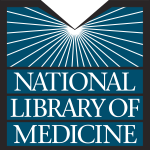- Industry: Library & information science
- Number of terms: 152252
- Number of blossaries: 0
- Company Profile:
The National Library of Medicine (NLM), on the campus of the National Institutes of Health in Bethesda, Maryland, is the world's largest medical library. The Library collects materials and provides information and research services in all areas of biomedicine and health care.
Inhibiting or preventing the actions of nicotine and nicotine-like agents on the nicotinic acetylcholine receptors.
Industry:Biology; Chemistry
Relationship between two preparations of the same drug in the same dosage form that have a similar bioavailability.
Industry:Biology; Chemistry
Complete conversion of organic substances to inorganic derivatives by living organisms, especially micro-organisms.
Industry:Biology; Chemistry
Secreting adrenaline (epinephrine) and (or) related substances; in particular referring to sympathetic nerve fibers.
Industry:Biology; Chemistry
Form of mineralization in which organic tissue becomes hardened by deposition of calcium salts within its substance.
Industry:Biology; Chemistry
Airborne concentration of a potentially toxic substance which should never be exceeded in a worker's breathing zone.
Industry:Biology; Chemistry
Substance inhibiting or preventing the actions of muscarine and muscarine-like agents, e.g., atropine, on the muscarinic acetylcholine receptors.
Industry:Biology; Chemistry
Schizophrenia marked by excessive, and sometimes violent, motor activity and excitement, or by generalized inhibition.
Industry:Biology; Chemistry
Toxin produced by Cyanobacteria, sometimes called bluegreen algae.
Note: Examples are microcystin and cylindrospermin.
Industry:Biology; Chemistry
Metabolic conversion of a xenobiotic to a more toxic derivative or one which has more of an effect on living organisms.
Industry:Biology; Chemistry
